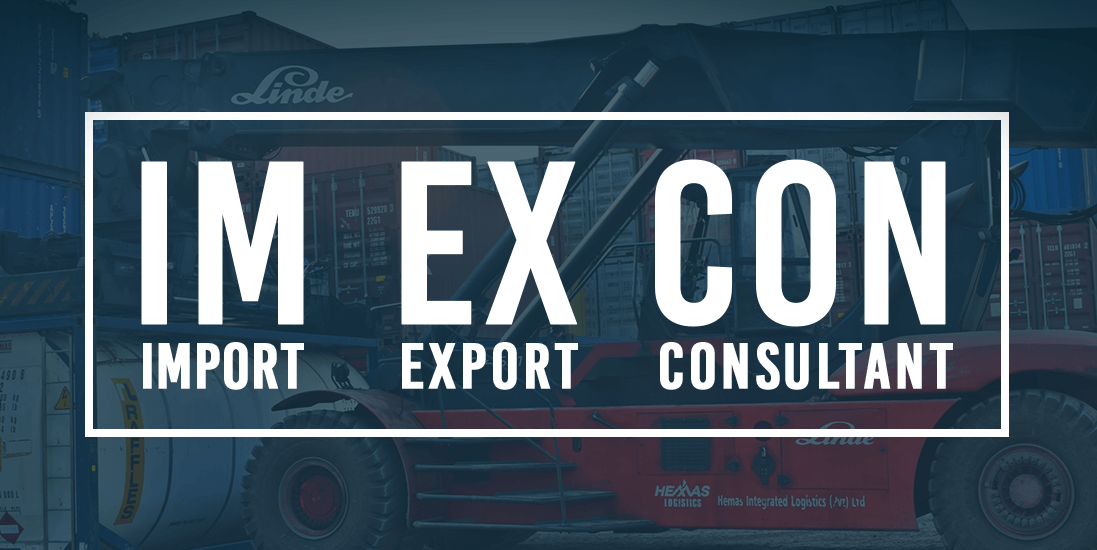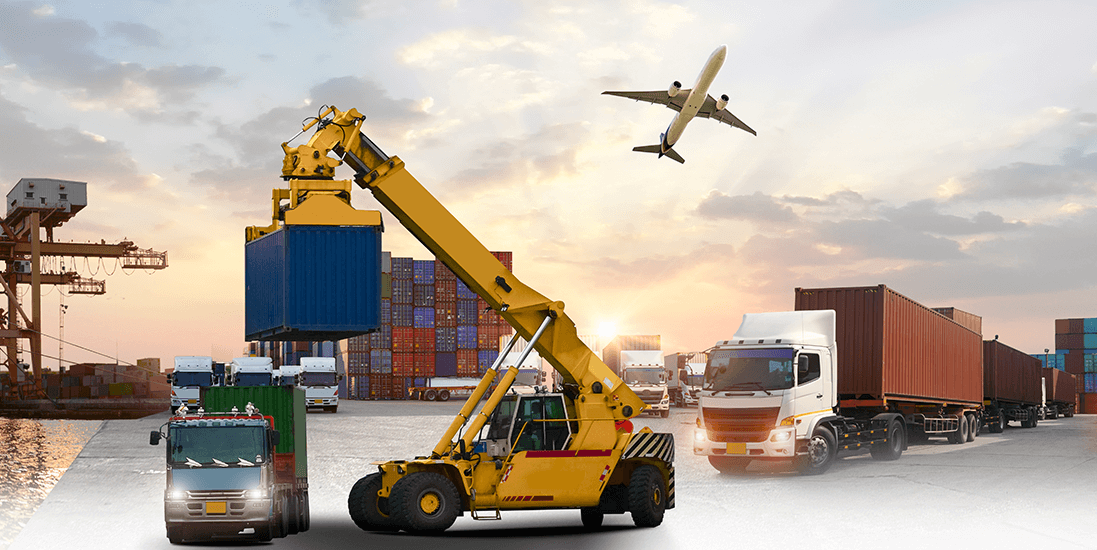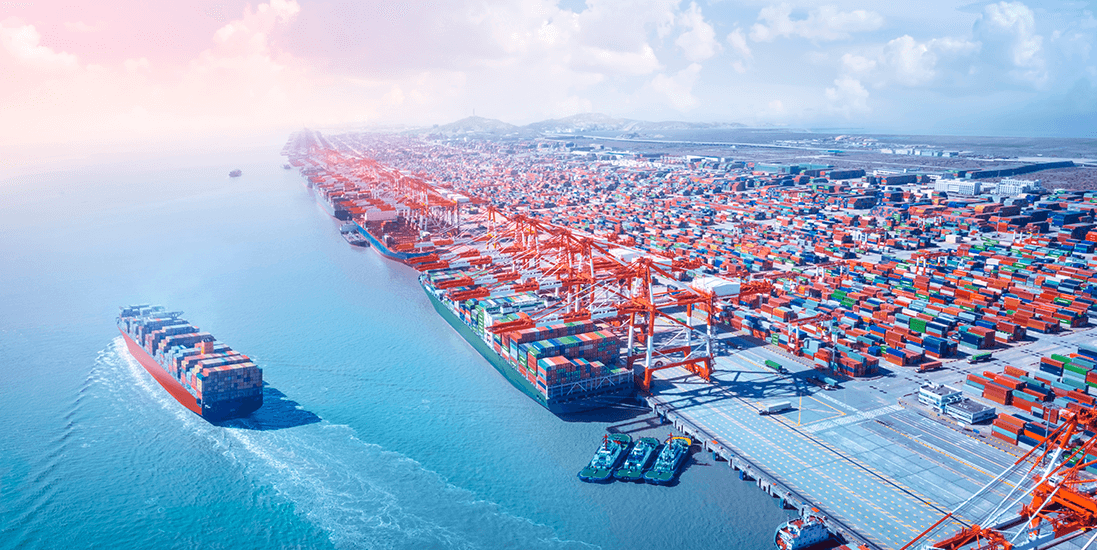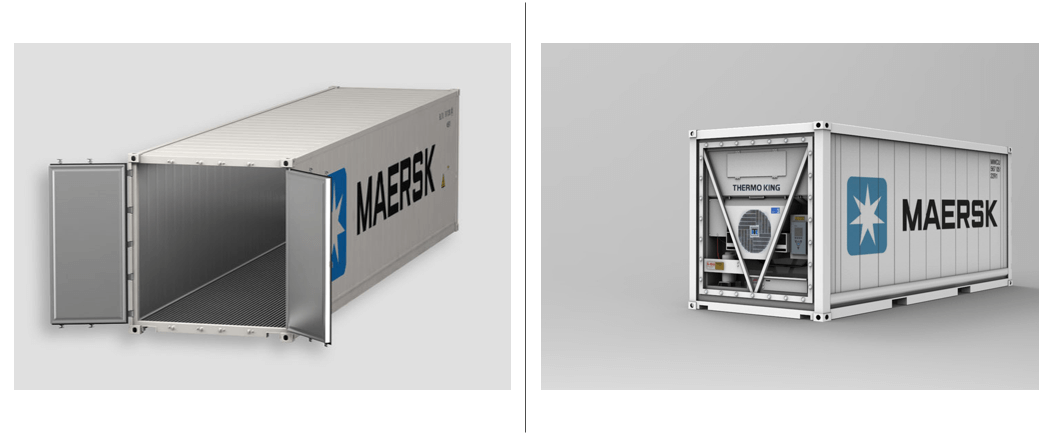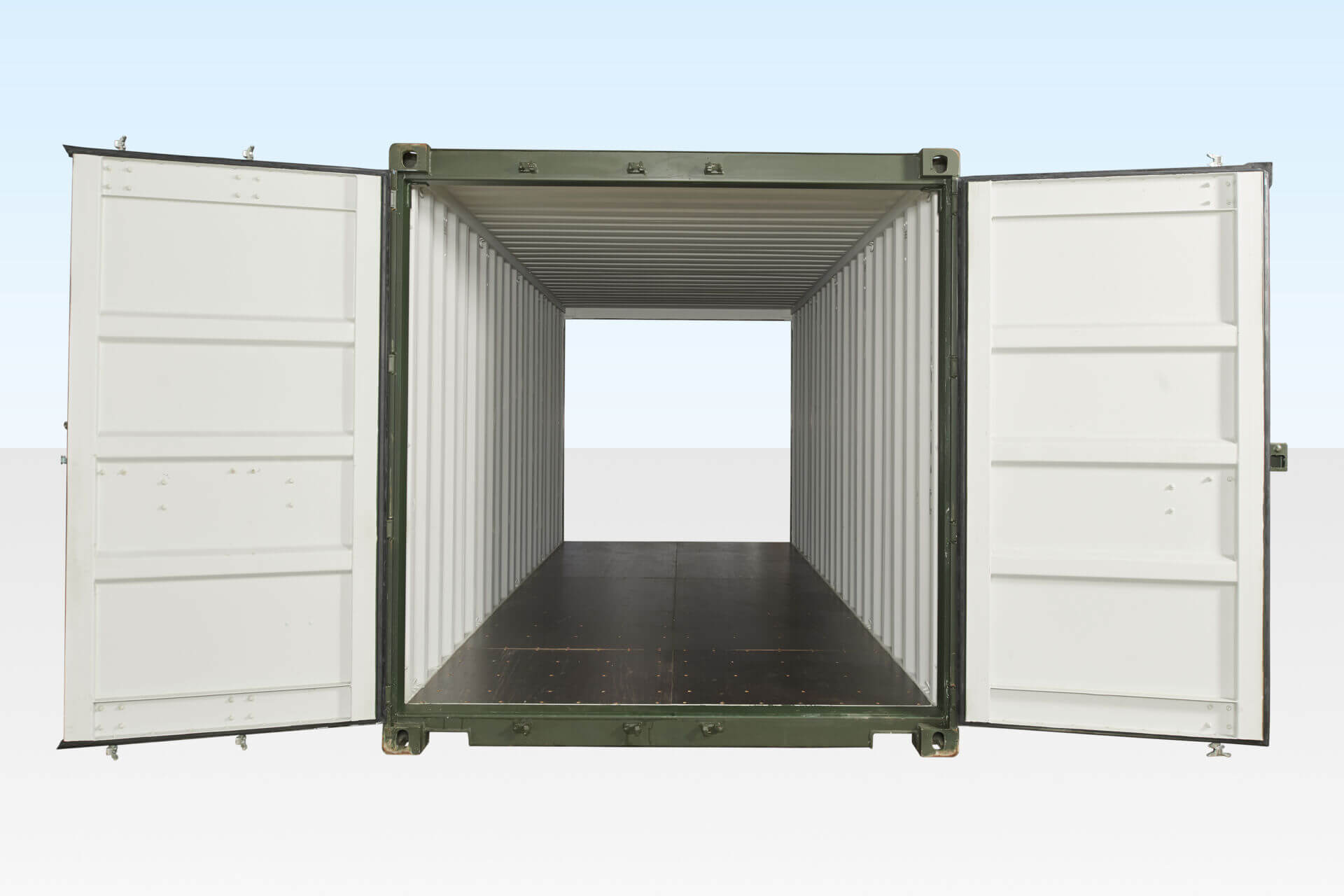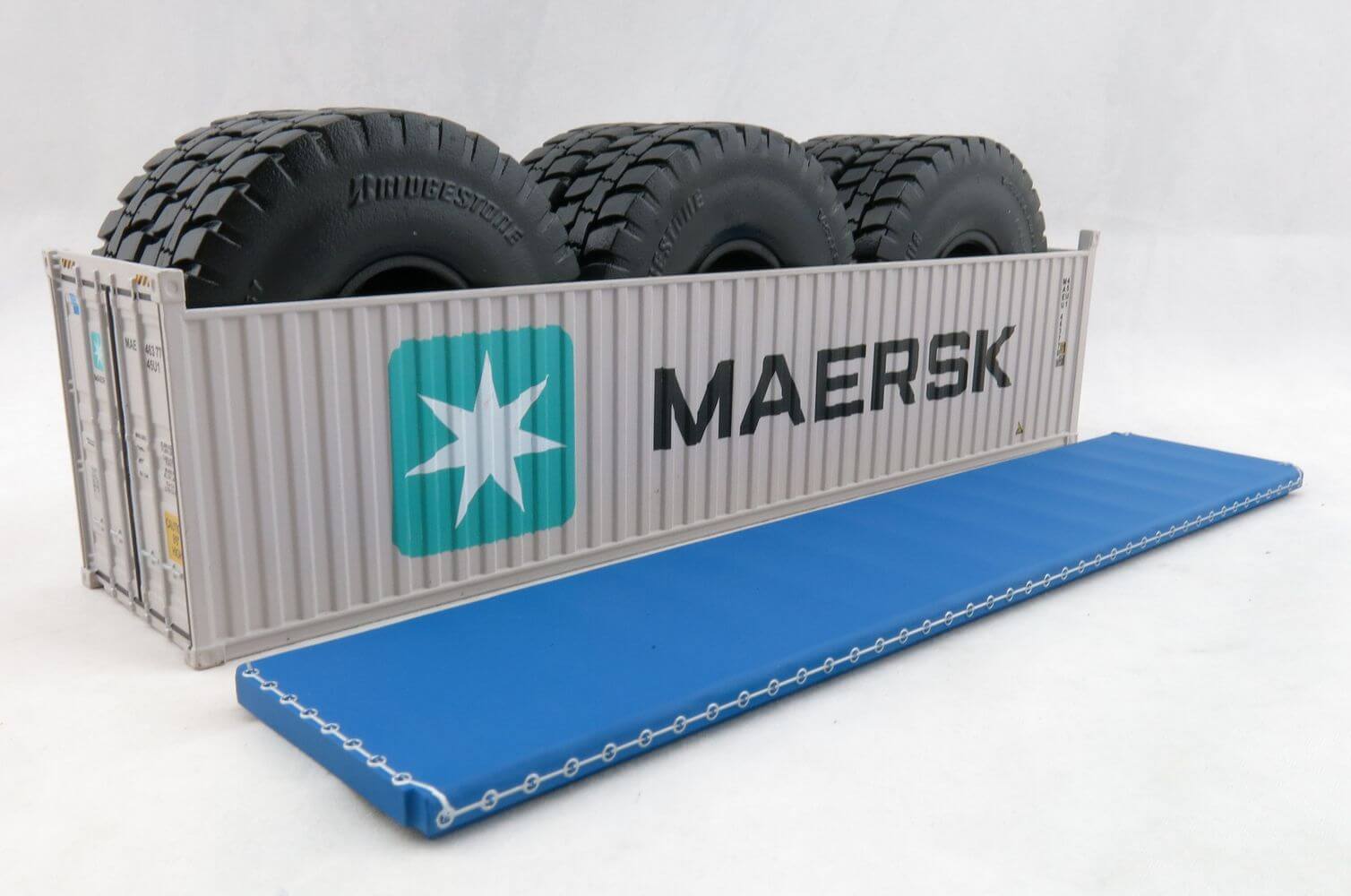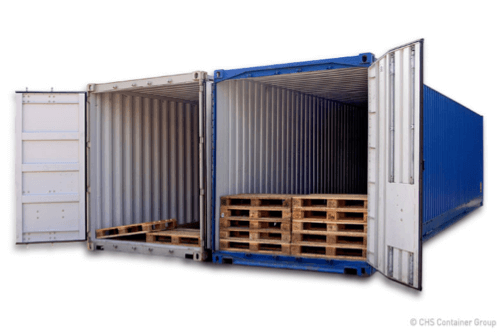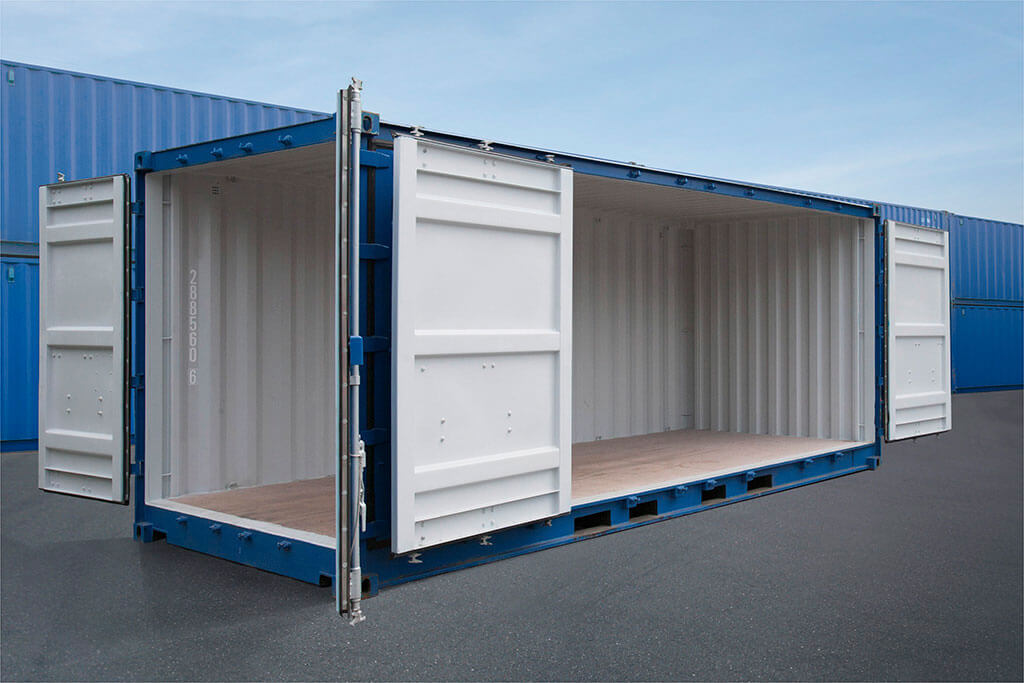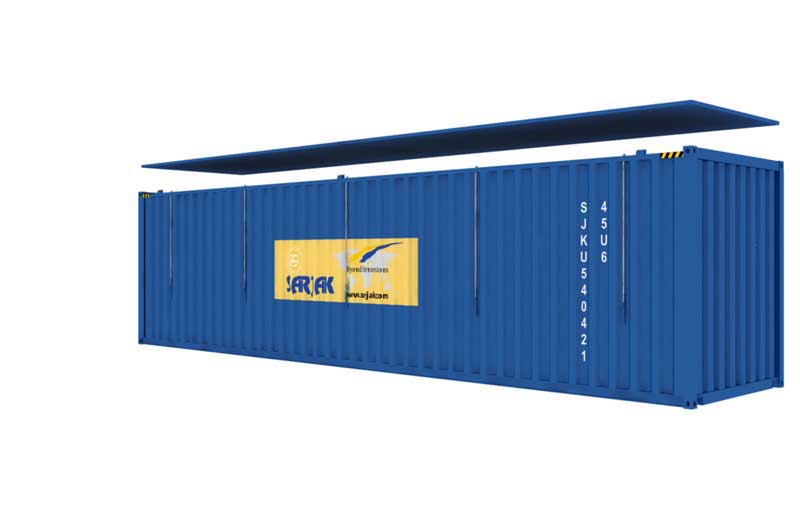A standard container is the most common type of container in the market. It is usually made of steel and sometimes aluminum. The aluminum containers have a slightly higher payload. They are airtight and water-resistant, preventing damage from the outside. One end of the container has doors through which the cargo is stowed. Despite the standardized sizes of 20 and 40-feet containers, the capacity of the containers can vary from operator to operator.
Standard containers can carry most types of dry cargo such as boxes, pallets, sacks, barrels, etc. It can be customized on the inside to carry a specific type of goods. For instance, hangers can be fit inside to carry clothes that could be directly transported to the store. Since standard containers are basic, they are not expensive
| Measure |
20ft |
40ft |
| Internal length |
5.9m / 19.4ft |
12.03m / 39.5ft |
| Internal width |
2.35m / 7.8ft |
2.4m / 7.9ft |
| Internal height |
2.39m / 7.9ft |
2.39m / 7.9ft |
| Tare weight |
2,300kg / 5,071.5 lbs |
3,750kg / 8,268.8 lbs |
| Payload capacity |
25,000 kg / 55,126.9 lbs |
27,600kg / 61,200 lbs |
| Cubic capacity |
33.2 m3 / 1,172 cu ft |
67.7 m3 / 2,389 cu ft |
High cubes, in short HC, refers to containers that are similar in structure to normal containers. The length and width remain the same, and the height increases. This enables them to meet more cargo demands.
| Measure |
40ft HC |
45ft HC |
| Internal length |
12.03m/39.5ft |
13.55m/44.5ft |
| Internal width |
2.35m / 7.8ft |
2.35m / 7.8ft |
| Internal height |
2.70m / 8.10ft |
2.70m / 8.10ft |
| Tare weight |
3,900kg / 8,598 lbs |
4,800kg / 10,552 lbs |
| Payload capacity |
28,600 kg / 63,052 lbs |
27,700kg / 61,067 lbs |
| Cubic capacity |
76.3 m3 / 2,694.5 cu ft |
86 m3 / 3,037 cu ft |
A special container has been manufactured or converted for different purposes to suit specific needs that can’t be covered by a container with standard sizes and dimensions. Many things can be changed such as: A different position of the door(s), changes in the height and width of the container itself, or technological equipment.
Reefer containers are nothing but container-sized refrigerators to move goods that need to be maintained at a certain temperature. The flooring of the container has T-shaped decking which sends chilled air into the container. This makes sure there is a consistent airflow among the goods. They can maintain any temperature between -30°C and +30°C.
Reefer containers mostly come in 20-feet equivalent units. They carry temperature-sensitive items such as fruits, vegetables, ice cream, drugs, or meat. Each item has a different temperature requirement and it needs to be maintained to protect its freshness. The reefer container can be sectioned to cool and freeze at the same time. It is powered by a generator that provides electricity. When they’re on the road being transported by trucks, the containers are powered by fuel. The reefer container is expensive considering the power and maintenance requirements.
| Measure |
20ft |
40ft |
| Internal length |
5.44m / 17.9ft |
11.56m / 37.9ft |
| Internal width |
2.29m / 7.5ft |
2.28m / 7.5ft |
| Internal height |
2.27m / 7.5ft |
2.25m / 7.4ft |
| Tare weight |
3,080kg / 6,791.4 lbs |
4,800kg / 10,584 lbs |
| Payload capacity |
27,700 kg / 61,078.5 lbs |
29,520kg / 65,080 lbs |
| Cubic capacity |
59.3 m3 / 2,093.3 cu ft |
67.3 m3 / 2,380 cu ft |
Double Door Containers are built to have double doors that swing open outside on both ends. Both sets of doors are built with the same specifications. It is the most convenient option for loading and unloading a container, as goods can be loaded or quickly unloaded from either end as required. For instance, a car loaded can just drive through and doesn’t have to be reversed.
They are also called tunnel containers as they are used to create a safe passage in construction sites. The container can be customized according to the storage purposes of the customer. It can be partitioned to make different slots.
| Measure
| 20ft |
40ft |
| Internal length |
5.9m / 19.4ft |
12.03m / 39.5ft |
| Internal width |
2.35m / 7.8ft |
2.4m / 7.9ft |
| Internal height |
2.39m / 7.9ft |
2.39m / 7.9ft |
| Tare weight |
2,300kg / 5,071.5 lbs |
3,750kg / 8,268.8 lbs |
| Payload capacity |
25,000 kg / 55,126.9 lbs |
27,600kg / 61,200 lbs |
| Cubic capacity |
33.2 m3 / 1,172 cu ft |
67.7 m3 / 2,389 cu ft |
Open-top containers, as the name suggests, have an open top. The roof of the container is covered with tarpaulin sheets instead of a solid roof. That way it can be covered or left open according to convenience. The container is made of steel with wooden flooring and the door heads can be swung open for easy loading and unloading. They’re usually in the sizes of 20-feet and 40-feet containers.
Open-top containers are used when cargo is too large to be in a regular shipping container. For instance, machinery or heavy materials that cannot be stowed sideways but arranged from the top through heavy-lifting cranes. These containers have larger capacities than the normal ones as the roof is open. It has lashing rings that keep the cargo stable and has the capacity to load 1000 kgs.
The open-top containers might be generally high in price as there are not many units in circulation in the market. The price may also differ based on whether the container is in “gauge” or not. As in if the height of the cargo is under the roof level or is protruding above the roof level. If the cargo is protruding, it is expensive and other containers cannot be stacked on top of it, and it is very wasteful.
Some of the common items loaded in an open-top are pipes, cables, construction materials, machinery, and bulky raw materials.
| Measure |
20ft |
40ft |
| Internal length |
5.89m / 19.4ft |
12.03m / 39.5ft |
| Internal width |
2.35m / 7.8ft |
2.4m / 7.9ft |
| Internal height |
2.35m / 7.8ft |
2.34m / 7.8ft |
| Tare weight |
2,260kg / 5,982 lbs |
3,980kg / 8,774 lbs |
| Payload capacity |
28,220 kg / 62,214 lbs |
26,500kg / 58,422 lbs |
| Cubic capacity |
32.7 m3 / 1,155 cu ft |
66.7 m3 / 2,356 cu ft |
These containers were designed specifically to carry wooden Euro pallets that are commonly used within Europe. They are available as 20-feet, 40-feet, and high cube containers. The pallets are usually in the size of 1200x800x144. A standard 20-feet container can carry 11 of them, while a pallet wide 20-feet container can carry 15 pallets. This is possible because the containers are approximately 5m wider on the inside than the standard ones.
The pallet wide containers keep the cargo tight, so there is almost no chance of cargo slipping. As seen, this kind of container is made to measure exactly two euro-pallets in width. In comparison, the standard container is only able to carry one.
| Measure |
20ft |
40ft |
| Internal length |
5.89m / 19.32ft |
12.03m / 39.46ft |
| Internal width |
2.44m / 8ft |
2.44m / 8ft |
| Internal height |
2.39m / 7.84ft |
2.38m / 7.80ft |
| Tare weight |
2,400kg / 5,291.09 lbs |
3,800kg / 8,377.56 lbs |
| Payload capacity |
28,080 kg / 61,905.80 lbs |
26,680kg / 58,819.33 lbs |
| Cubic capacity |
34.34 m3 / 1,213 cu ft |
69.86 m3 / 2,467.12 cu ft |
Flat rack containers are used for heavy loads and cargo that need loading from the top or sides such as pipes, machinery, or busses. The containers only have sides on the short end of the container.
The numerous lashing rings allow the load to be secured safely and by the legal regulations. For example, crates exceeding the size of a closed container can be loaded. It’s even possible to attach stanchions. Thus, creating a lateral boundary without having to forego the other advantages of a flat rack container.
The new generation of flat rack containers is capable of accommodating loads of up to 40,000 – 50,000 kilograms with uniform distribution of the load. Although this makes it possible to load the above-mentioned goods, they usually take up a single place on a container ship. Due to the dimensions of the cargo or its weight, stacking is not possible.
| Measure |
20ft |
40ft |
| Internal length |
5.94m / 19ft |
12.13m / 39.8ft |
| Internal width |
2.35m / 7.7ft |
2.40m / 7.9ft |
| Internal height |
2.35m / 7.7ft |
2.14m / 7ft |
| Tare weight |
2,360kg / 5203.8 lbs |
5,000kg / 11,025 lbs |
| Payload capacity |
30,140 kg / 66,458.7 lbs |
40,000kg / 88,200 lbs |
| Cubic capacity |
32.7 m3 / 1,154.3 cu ft |
62.2 m3 / 2,195.7 cu ft |
There are different sizes of flat rack containers and two different types. A collapsible flat rack has sides that can be collapsed so that empty containers can be shipped more efficiently. Fixed-end flat racks can be shipped and have greater top load as they are often stronger in construction.
Just like open-top containers or reefers, flat rack containers are special containers. This means higher freight costs for transport and stacking is often not possible due to dimensions or weight, which makes it necessary to occupy a single space.
However, open tops and flat racks are similar, it is recommended to use open tops for heavy or over high cargo and flat rack containers when there is no other choice as roofs bows add to the structural integrity of a container to avoid buckling.
A side door container, also known as an open side container, has extra doors that open on the long side of the container on top of the doors in the end. The floor is fitted with surringsrings to hold the cargo in place. The side doors make it extremely convenient to load cargo that is bulky and cannot fit through the end doors. More workers can work simultaneously while loading or retrieving the cargo and it gives full access to retrieve what is needed.
| Measure |
20ft |
40ft |
| Internal length |
5.9m / 19.4ft |
12.03m / 39.5ft |
| Internal width |
2.35m / 7.7ft |
2.28m / 7.4ft |
| Internal height |
2.34m / 7.7ft |
2.29m / 7.5ft |
| Tare weight |
3,200kg / 7,054.7 lbs |
6,100kg / 13,448.2 lbs |
| Payload capacity |
20,800 kg / 45,856.1 lbs |
30,400kg / 67,020.5 lbs |
| Cubic capacity |
31.0 m3 / 1,094.7 cu ft |
64 m3 / 2,260.1 cu ft |
Hard top containers are very similar to open containers with the difference being a detachable steel roof instead of a tarpaulin sheet. The roof of a hard top container has points through which a forklift can lift the roof. As seen with the previous containers, this design allows for easy loading/unloading of specific types of cargo.
| Measure |
20ft |
40ft |
| Internal length |
5.89m / 19.4ft |
12.03m / 39.5ft |
| Internal width |
2.35m / 7.8ft |
2.4m / 7.9ft |
| Internal height |
2.35m / 7.8ft |
2.34m / 7.8ft |
| Tare weight |
2,260kg / 5,982 lbs |
3,980kg / 8,774 lbs |
| Payload capacity |
28,220 kg / 62,214 lbs |
26,500kg / 58,422 lbs |
| Cubic capacity |
32.7 m3 / 1,155 cu ft |
66.7 m3 / 2,356 cu ft |

